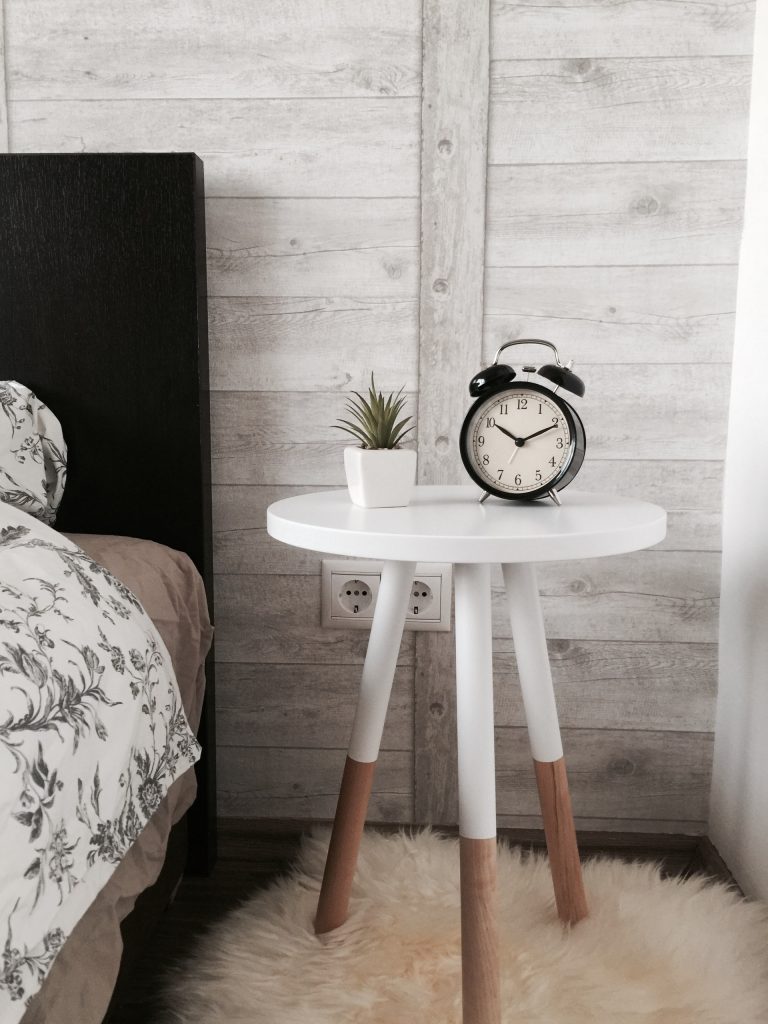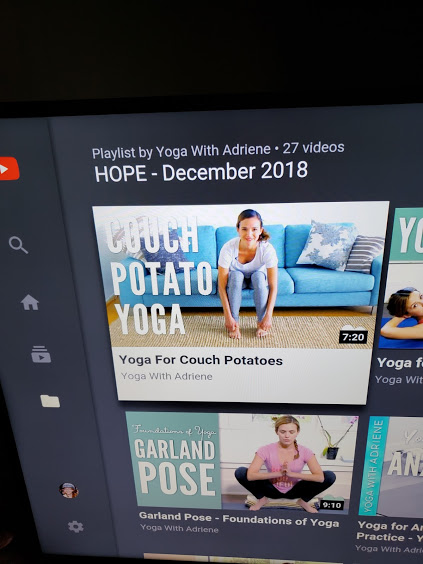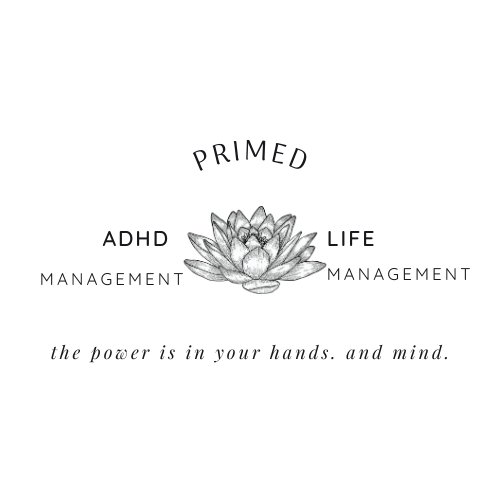
We’re living in a strange time. Some people are referring to it as “The new normal.” I recently wrote about why the quarantine lifestyle suits me and why I hope that in “after times,” we can take some of our new habits with us. I pray for a speedy recovery of the world.
I’ve been working from home intermittently in some way for years now, as a freelancer/contractor, as an in-office/at-home hybrid (my last job) and then full-time at home (also my last job, during the pandemic). Certain non-negotiables make my life easier.
Here are suggestions to help you be most productive and most well while working from home.
1. Sleep: Consistent bedtime and wake time
As you would with an office job that you need to commute to, go to bed at the same every night and wake up a the same time every morning. Alternately (and I do this sometimes): Set an alarm for your ideal sleep time if you use an alarm app with that feature. (My ideal sleep time is 8 hours, so whether I go to bed at 11 p.m. or 1 a.m., it will wake me up 8 hours later.)
It is SO important to get enough sleep. Lack of sleep can hurt your immune system. Our body repairs itself during sleep. Our brains experience a bunch of necessary processes. We need to shut down at the end of every day, turning it off and on again.

Photo by Benjamin Voros on Unsplash
2. Stick to a morning routine
For me, it looks like this (though the order changes):
- Get up, do bathroom things. I might say a prayer or blessing before or after – some of my favourite Jewish ones for the morning.
- Get dressed, walk the dog (15 minutes)
- Morning mantras. I use a mantra from Gabrielle Bernstein’s book Super Attractor. The mantra begins with, “My body is rested and my mind is clear. I start my day with positive thoughts and energy.” The whole thing takes a few minutes.
- Meditate (I use the Insight Timer app for guided meditation and/or the timer).
- Journal
- Some days I do a slightly modified version of the Daily Design Method from Gabrielle Bernstein. It was part of my daily practice but I slipped when I started working from home.
- Sometimes I do yoga or a HIIT workout in the morning, sometimes I do it in the evening, or not at all.
Meditation and journaling are mostly non-negotiable for me! One reason for this is that the Insight Timer app tracks sessions I like to see the number go up. It’s a competition with myself. As with websites or social media, paying attention to metrics helps improve. Metrics aren’t everything, though. I feel better when I start the day meditating – because of the act itself, and because it feels good to know that I’ve been consistent – which is different than watching the numbers. Success feels good. On the occasion that I don’t do a morning meditation, I try to do a bedtime one. And then, and rarely, sometimes it doesn’t happen. Sometimes I feel like I’m stretching to find something that will count towards the log. (I took a silent walk. I felt zen while I cooked.)
I’m currently at 68 consecutive days because I missed a single day in months.
“But what I’m not into meditating?”
If meditation isn’t for you, go for a run or something else. If journals aren’t for you, maybe creating visual art is. The idea is to be expressive, to get your feelings out, and to develop a sense of routine. Routine helps with feeling “normal.”
If you don’t have a dog to get you outside, get dressed anyway. Change from one pair of comfy pants to another.
Don’t forget to shower – if not daily, then every other day. Wash your “pits and bits” so that you don’t stink and so that bacteria doesn’t get trapped.
Change your underwear every day to avoid Urinary Tract Infections and other bacterial infections and because it’s gross not to. You don’t want to have to go to the doctor with a UTI during the COVID-19 crisis. Often, people leave doctors’ offices sicker than when they arrived, and you don’t want to need a visit to the pharmacy for antibiotics.
Routine is also the second in my 6-pillar signature program PRIMED for ADHD Management.
Mindfulness is the fourth pillar.
3. Exercise
The days I don’t work out, it’s because my body is resting. (Or I’m being lazy or telling myself it’s not a priority.) The morning dog walk around the block gets my body moving and creativity flowing.
If you can get outside for a physically-distanced walk, do it!
My favourite online yoga and fitness instructors are Adriene Mishler (Yoga with Adriene), Brett Larkin (Brett Larkin Yoga) and Sadie Nardini (Fit and Fierce – Yoga, Yoga Shred HIIT workouts).
They all have free classes on YouTube with additional premium memberships and programs. At various times, I’ve paid for all three (not at once). Currently, my membership is with Sadie for $9/month USD.
Stress is bad for the immune system. You need your immunity up for those weekly trips to the grocery store.

4. Take breaks.
Breaks are essential, and not just when you’re working from home. Those of us with ADHD tend to hyperfocus and “suddenly”, the day is gone. For the sake of your eyes, I recommend a short 30-60 second break every 15 minutes to look away from the computer screen. Every 45-60 minutes, take a more extended break and move around.
During your short breaks, you can do the following.
- Some squats or lunges
- Look outside. Train your eyes on a spot on the horizon. Blink. This one is important.
- Use it as a reminder to get yourself a glass of water or tea (about 5 minutes). I don’t drink enough water, but when I do, I fill a one-litre jar with water, and each time I bring it to my lips and swallow, I count to 10. 10 seconds of anything is manageable.
- Stretch your back.
During your longer breaks
- Excercise
- Read a book or article. Set a timer, so you know when to stop. I often save articles to read for later. I have web pages bookmarks all over, such as in Pocket (a bookmarklet that allows you to save on your computer or another device), Medium and the New York Times.
Having a dog helps remind you, but it’s not necessary. She’ll tell me to take shorter breaks because she needs to be let outside to pee. The longer break comes during her afternoon walk. My dog’s “crazy time” is consistent, every afternoon around 3:00 – which as I’m writing this sentence is coming up soon.
I recommend setting a timer for breaks. Search for a “Pomodoro” web browser extension or set a timer on your phone. Some Pomodoro extensions can remind you to take a break.
Work with your needs.
5. Set & maintain boundaries to separate work from home
It is SO important to separate work from home. Doing so can help prevent burnout. Keeping that separation establishes some sense of normalcy.
You need to set boundaries with your managers/clients and with the people you live with.
I’m terrible at this.
When I was employed full-time and working from home, I’d start at 8:30 a.m. and work into the evening with that outing with my dog for an hour or two mid-afternoon. I eventually realized that I’d settled into productivity blocks, which is a valid way to work (8:30-2:30, 4:30-7), but my mind was always on work. Furthermore, I’d work on weekends.
My recommendations:
- Set a start time and an end time each day (again, I’m terrible at this) and communicate these to those to whom you are accountable.If you can, work with your productivity rhythms. Working with your own rhythms might mean you start work at 8:30, or it might mean you start at 10. Regardless, if you’re employed full-time and have the flexibility to set your hours, you need to communicate them.
- If you’re working from home for a full-time job, keep your work on your work computer and your personal on your personal computer.
At the end of the business day, I turn off my work computer and set it aside. You could also put your work laptop away in a laptop bag when you’re done with it and then pull it out the next day. - Turn off work notifications when you’re not working and personal notifications when you are. I do this anyway. One exception: A few weeks into self-isolation, I put work email on my phone. Doing so made me feel better about leaving in the middle of the day. Even if there was nothing I could do about a task request, at least I could respond and knew what I was returning home to.
- Verbalize your home boundaries. If you live with people (spouse, kids, roommate), close the door to your office. If you don’t have a door, verbalize your work boundaries.
- Do a full 24-hour tech-free day. It could be Tech Shabbat on Saturday or screen-free Sunday.
6. Eat well and hydrate
In my house, we joke that forgetting to eat is part of “intermittent fasting,” which is a thing. We generally eat only once or twice a day. However, I recommend paying attention to your body and feeding it when needed. Keep healthy snacks around, such as roasted nuts or individually wrapped cheese.
Hydrate. See my water tip above. You can’t live on coffee alone.
Above all, stay healthy!
Doctors’ offices are NOT the place to be right now.
